Italian comfort food at 19th and M Streets NW
Two popular restaurants once competed half a block from each other.
Restaurants and nightclubs lined Connecticut Avenue below Dupont Circle in the World War II years, as we have seen previously. The restaurant district spilled west along M Street from Connecticut Avenue—The best French restaurant in the city, La Salle Du Bois, was at 18th and M—and has remained a lively destination for dining and nightlife ever since. While a wide variety of cuisines have been available in this relatively small zone, Italian comfort food once was dominant, thanks to two long-running restaurants: Gusti’s and Luigi’s.
Gusti’s
Agostino “Gusti” Buttinelli (1914–1978), a native Washingtonian, opened Gusti’s, on the northeast corner of 19th and M, in 1949. He did so after acquiring the property as an investment and finding no one interested in running a restaurant in the space. Without any previous experience, he gave up his hairdressing profession and started serving spaghetti and meatballs at his new eatery. —And, of course, all the other Southern Italian staples, including lots of pizza. It was never gourmet food, but it was satisfying. In 1953, Gusti explained: “Some folks come to me after a meal and remark that the dinner was the best they’ve ever eaten. I tell them they haven’t eaten many good dinners if mine are the best. But, they are the best for the price.”1
Buttinelli sold Gusti’s in the early 1960s and moved on to other restaurant ventures. His namesake restaurant continued, prospering in the 1970s and 1980s largely because of its prime location at 19th and M. Hungry customers of all ages thronged its dining room and outdoor patio. “If you’re in the neighborhood and fancy conventional Italian Fare, Gusti’s is for you,” the Washington Post suggested in 1989. “There’s little on its extensive menu to excite the palate, but prices are reasonable and the kitchen is adequate.”2 The formula worked for a long time, but the restaurant finally closed in 1998.
In the 1960s, an outpost of Gusti’s called the Italian Villa (or Gusti’s Italian Villa, or later G and G Italian Villa) opened in Union Market, at 501 Morse Street NE. The building still stands (as does the original Gusti’s) and most recently was the Union District Oyster Bar.
In 1965, Buttinelli opened Blackbeard’s, a steak and seafood restaurant, at 1801 Connecticut Ave NW, and in 1971 he rechristened it Agostino’s. He also ran the nearby Tahitian-themed Junkanoo and the Blair Mansion Inn in Silver Spring. Sadly, he died of a self-inflicted gunshot wound in 1978, at age sixty-four. Agostino’s closed within a few years.
Luigi’s
Meanwhile, just half a block south of the original Gusti’s stood Luigi’s, at 1132 19th Street NW. Owner Luigi Tito Calvi (1889–1963), was a Genoese immigrant who had dabbled in many occupations before he got into the restaurant business. Arriving in the U.S. as a near-penniless cabin boy in 1907, he traveled around the country working as a cook, sailor, truck driver, field hand, boilermaker, oil worker, dishwasher, and waiter. He gradually learned English reading the want ads in the newspaper and settled in Washington in 1930. His first restaurant, called Louie’s Lido, was at 1208 18th Street NW, followed by the Copacabana Nightclub at 1716 I St NW. In 1943, he opened Luigi’s—six years before Gusti’s.3
Warm-hearted Calvi gained a loyal following during the war years. He would hang up neckties of his patrons who had departed for overseas military duty. The cozy little eatery, with red-checked tablecloths and candles in wax-dripped chianti bottles, was always full. Like Gusti’s, Luigi’s offered classically Italian comfort food, at prices that everyone from local college students to retirees found they could readily afford. The pizza at “Famous Luigi’s” was especially good. In 1970, the Evening Star’s food critic, John Rosson, called Luigi’s the “paragon of Washington-area pizzerias.”4 Staff at Luigi’s claimed that Calvi had introduced pizza to Washington, but he was too late for that honor. Giuseppe and Nunziata Di Rienzo were likely the first to offer pizza in DC at their Torino Restaurant at 909 H Street NW, which opened in 1926.
After Calvi’s death in 1963, relatives from Italy took over, living in the second-floor space above the restaurant. In 1970, after moving out, they expanded the restaurant with a second-floor dining room and later briefly opened branch locations in Bethesda and Alexandria. Daughter Deborah Bruzzo, Luigi Calvi’s great-niece, grew up in the cramped space above the 19th Street eatery and later worked in her parents’ restaurant downstairs. In 1993, she opened her own, very different kind of place, Luigino, a sophisticated, first-class Italian restaurant at 1100 H Street NW downtown, which she co-owned with Chef Carmine Marzano. She took over Famous Luigi’s in 2009 after her father died, but it was on its last legs that point. When it finally closed in 2013, it was perhaps the oldest continuously operating pizzeria in Washington.5
Paul Herron, “On The Town,” Washington Post, May 11, 1953, 11.
Irwin Arieff and Deborah Baldwin, “District Dining,” Washington Post, Dec. 7, 1989, DC2.
“Luigi Calvi, 73, Owner of Cafe in GW Vicinity,” Evening Star, Dec. 26, 1963, B-4; “Restaurateur Luigi Calvi Dies,” Washington Post, Dec. 26, 1963, E11.
John M. Rosson, “Italian Place Goes Elegant,” Evening Star, Feb. 14, 1970, W-12.
Candy Sagon, “All in the Famiglia,” Washington Post, Feb. 24, 1993, E1; Tim Carman, “Famous Luigi’s will close its doors on Saturday night,” Washington Post, Dec. 20, 2013.

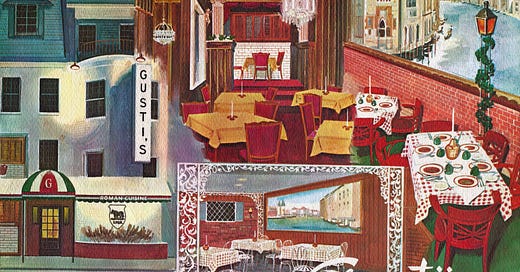


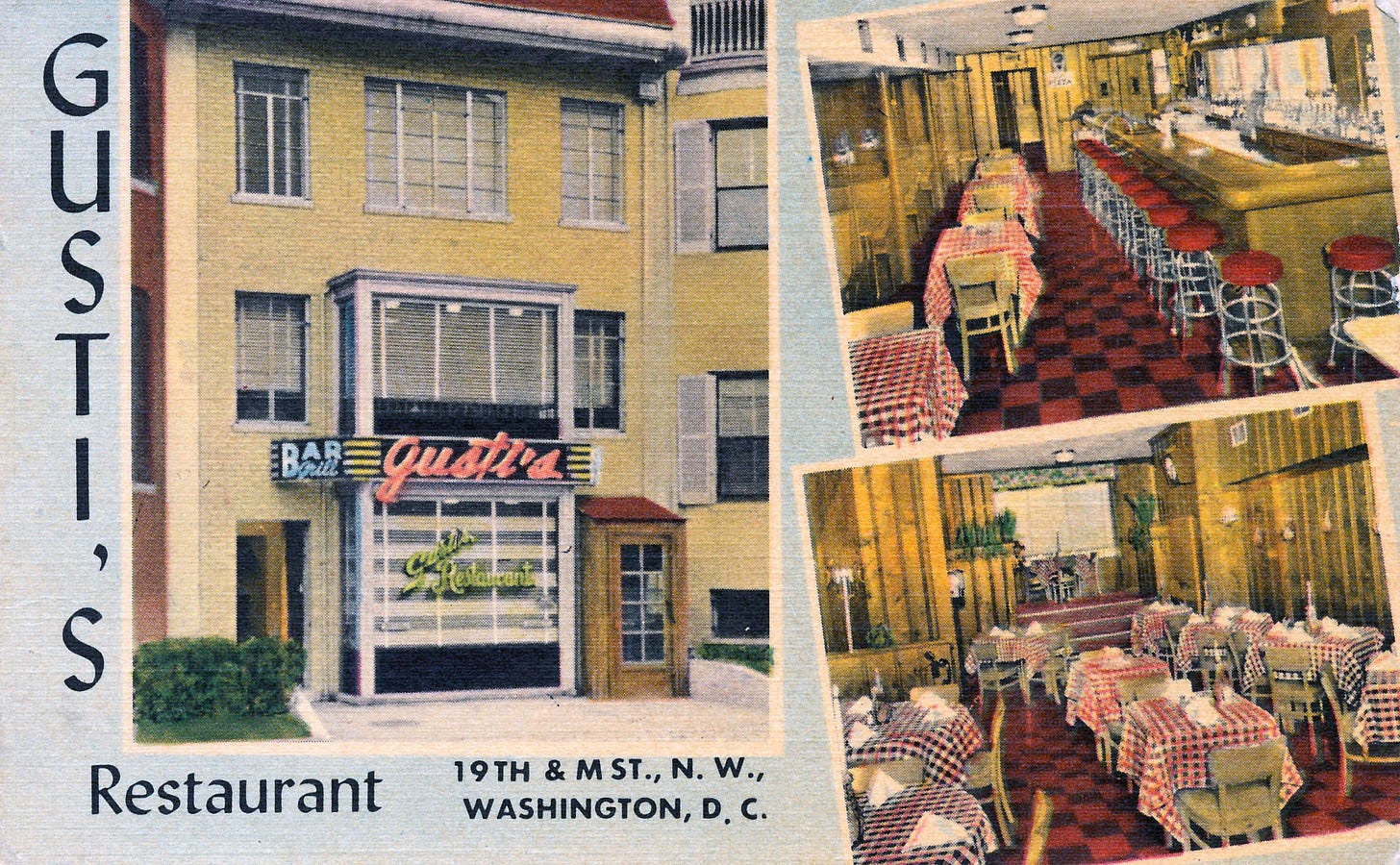
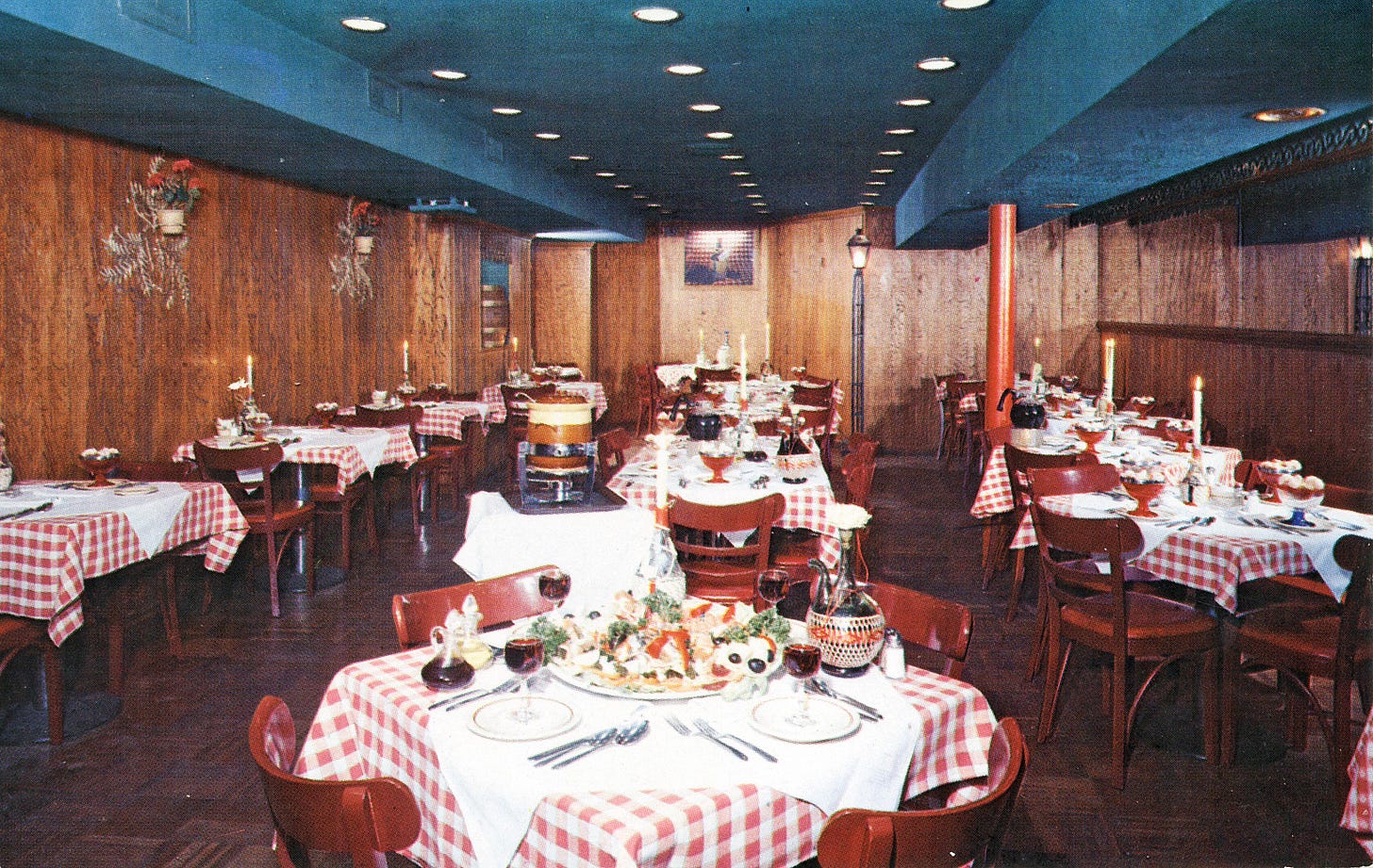
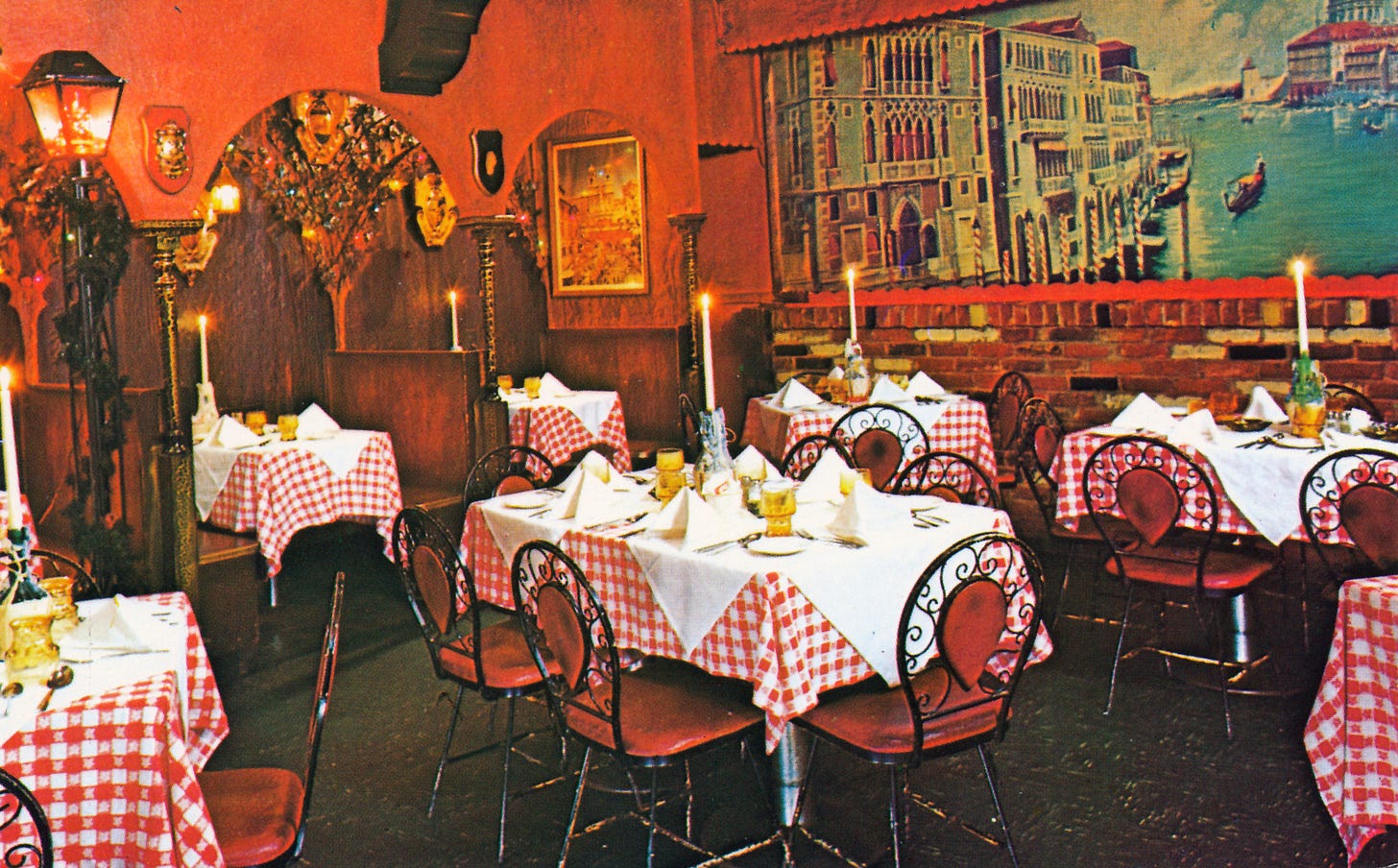
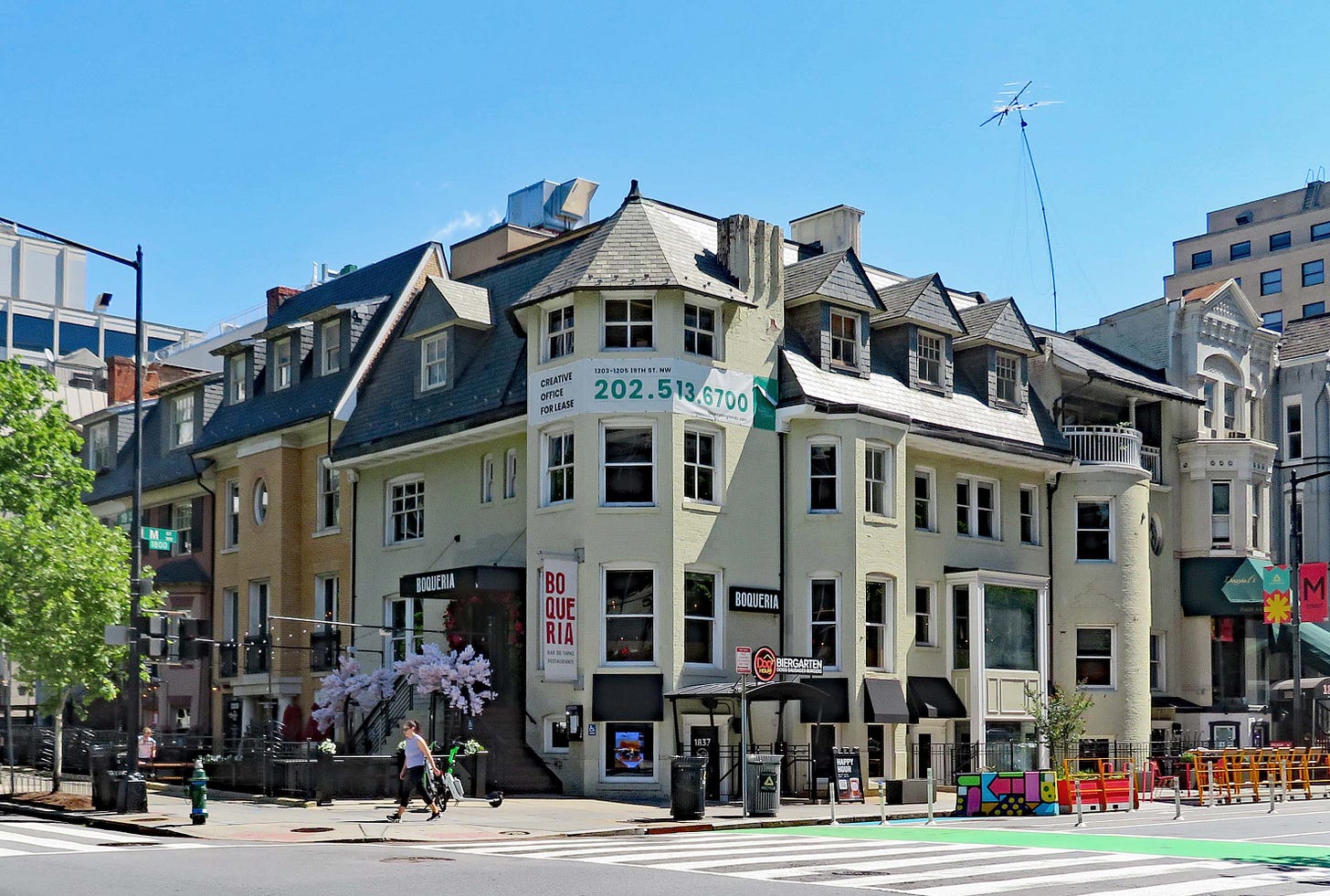
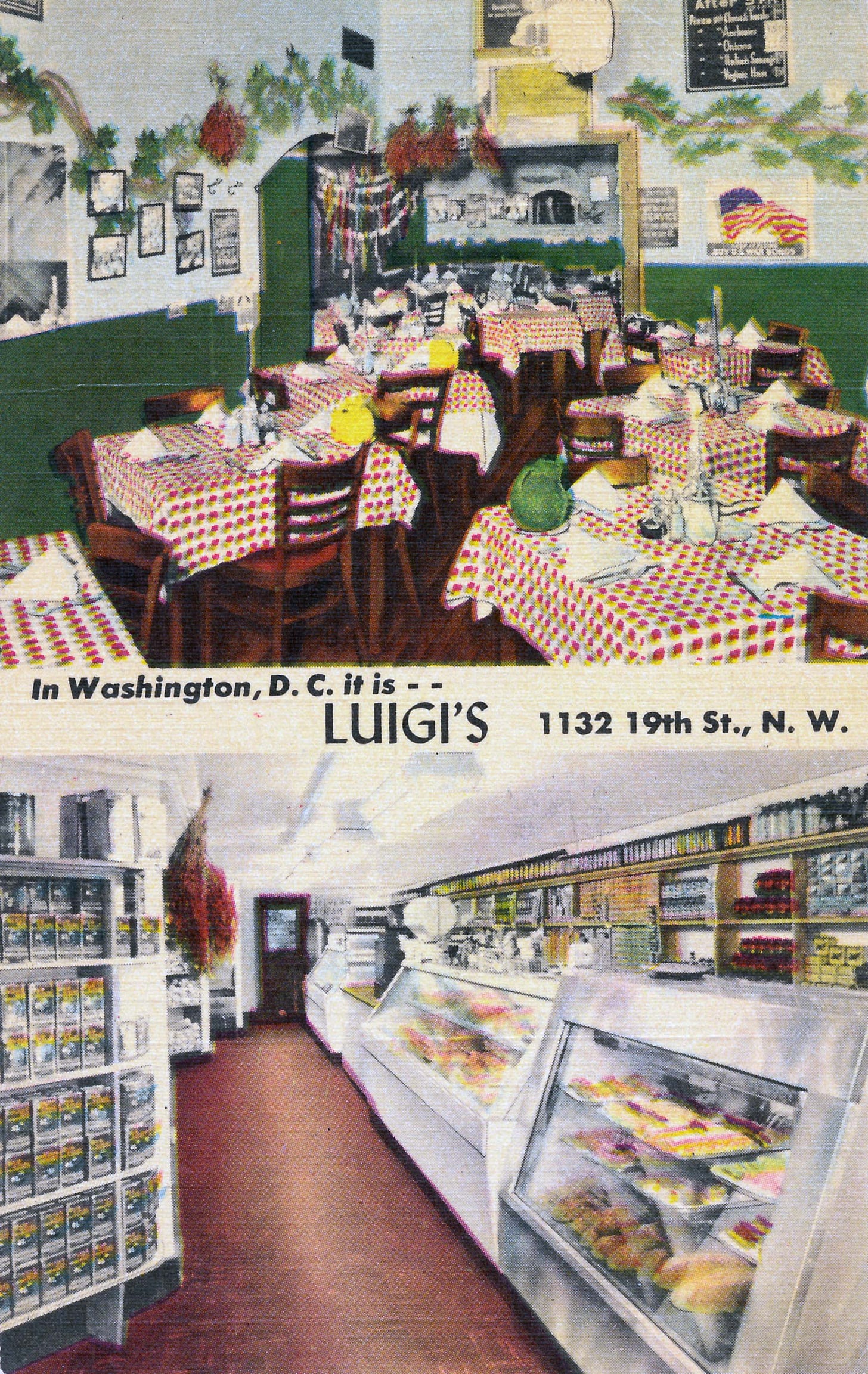
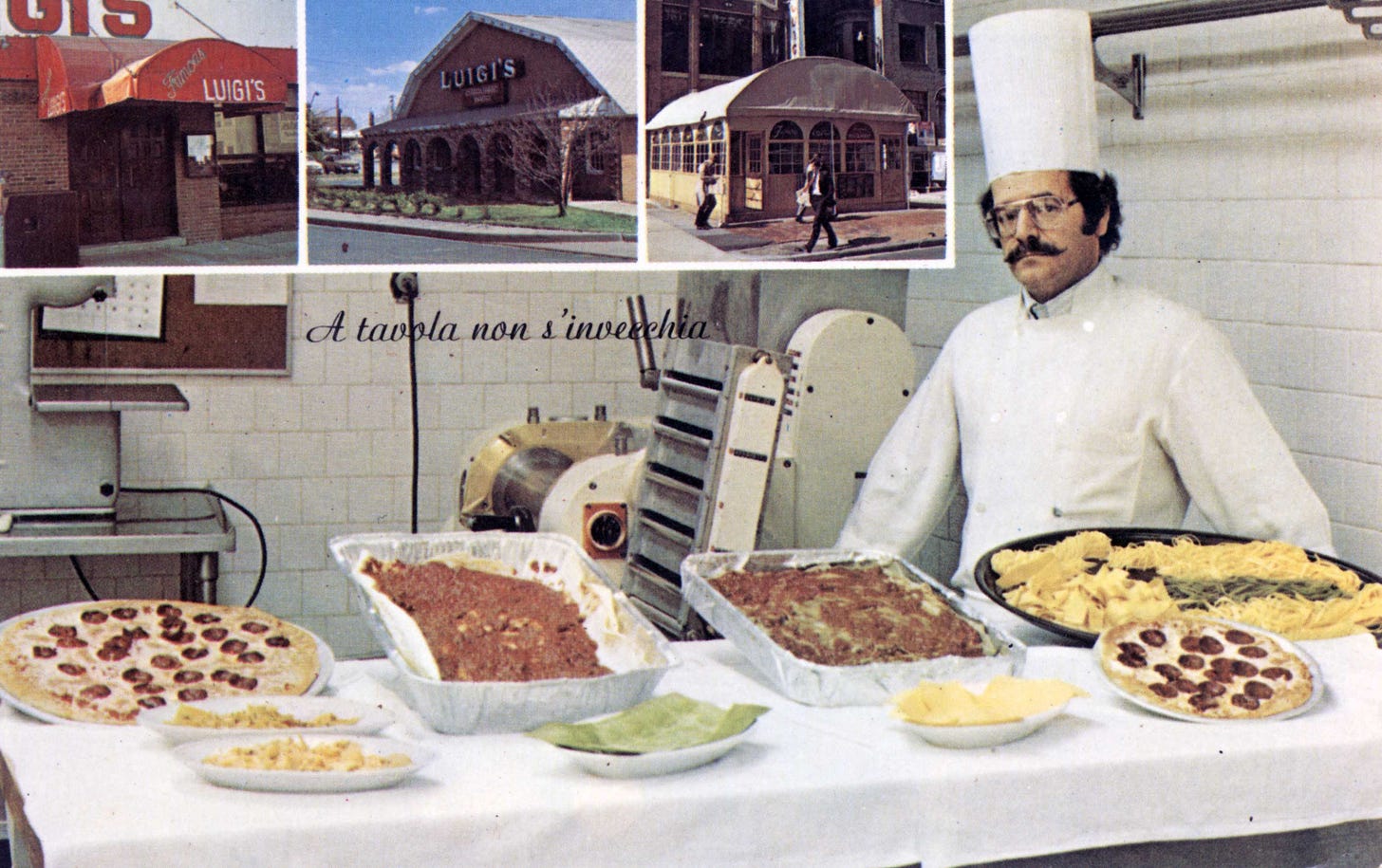
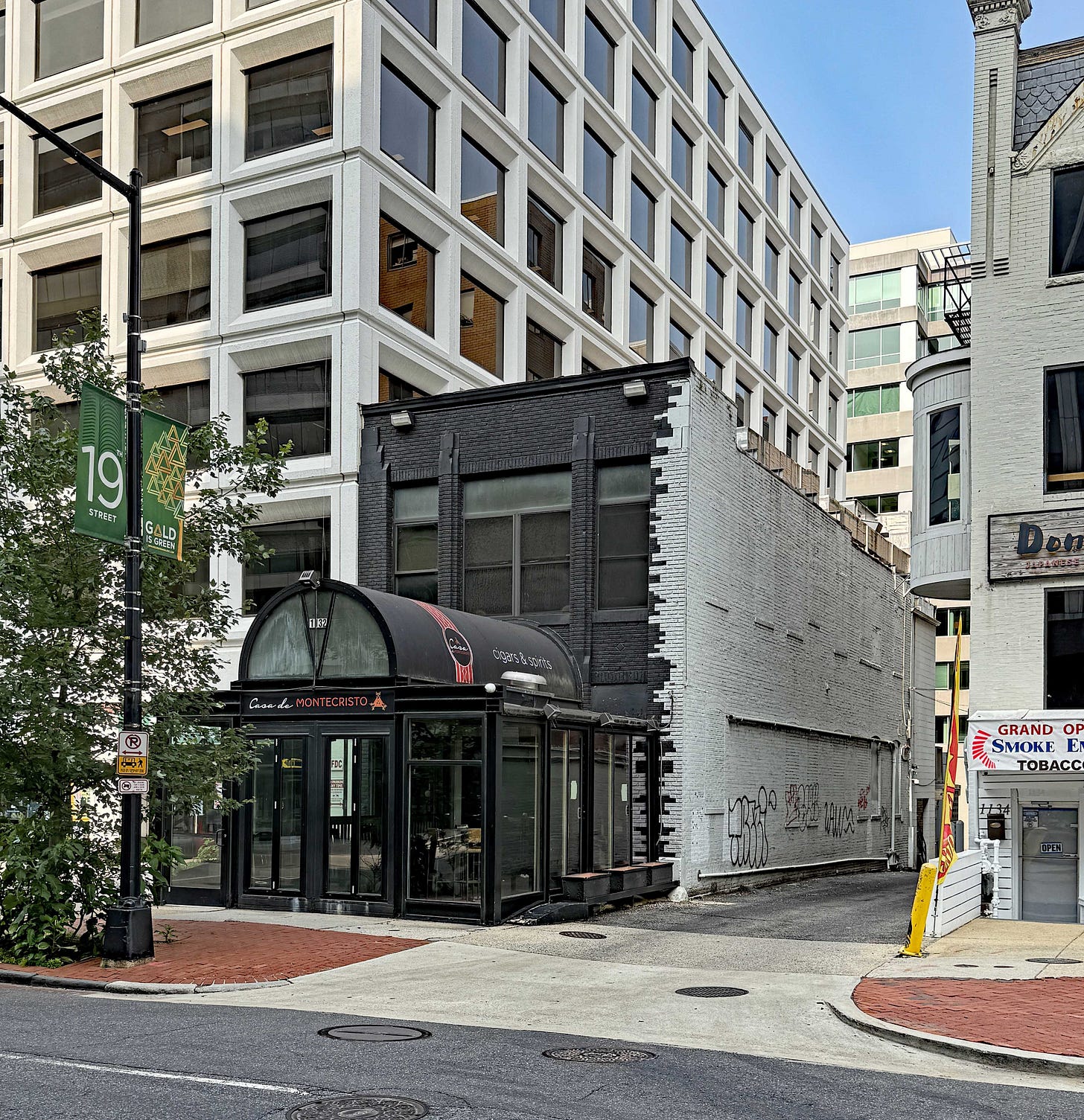
Hi John, another information filled feature about an area of DC that I had many experiences in, including eating at both places at least once. Gusti's was going downhill in '64 but seemed like a good place to take my girlfriend when, at 20, I had no idea of where else to go below upper Wisconsin Ave. By 1970 I worked across 19th from Luigi's and had several mouth scalding lunches there trying to down hot from the oven pizza on my half hour time allotment. A couple of years later the 19th and M scene was really jumping with PW's Saloon, The Airplane, The Exchange, The Cave, Goss's Sign of the Whale, and Paradise Cafe. Touch football in the street at 2am.
Oh my gosh, John, thanks for your mention of La Salle du Bois. My parents took me there as a toddler when they had the opportunity to dine out. The strawberries served in a "silver" bowl (which I apparently devoured) were a memory we shared all their lives.